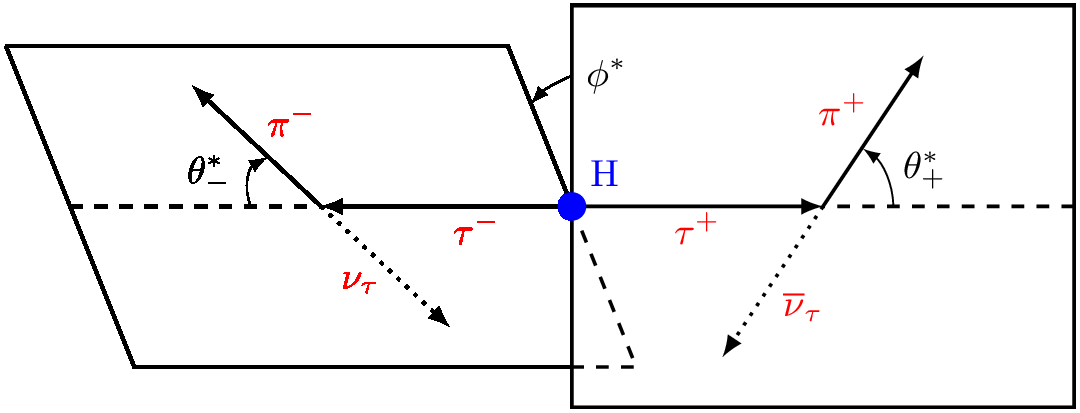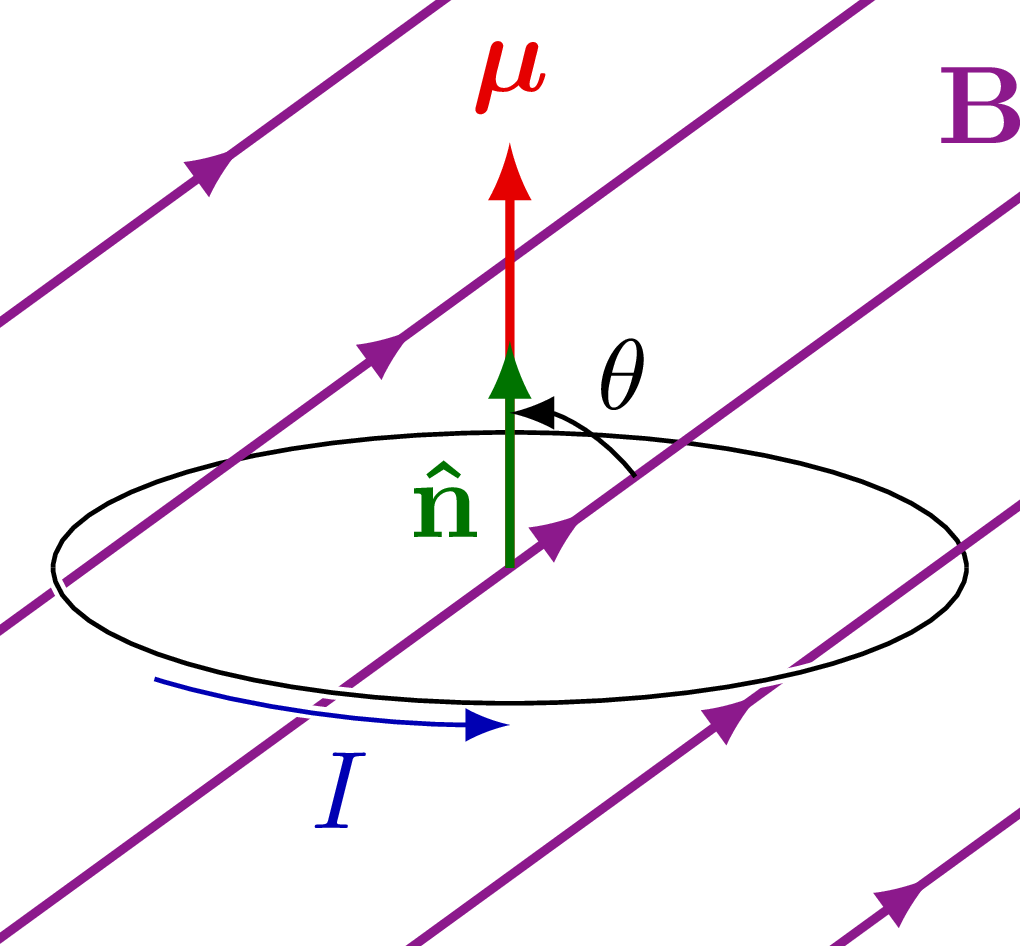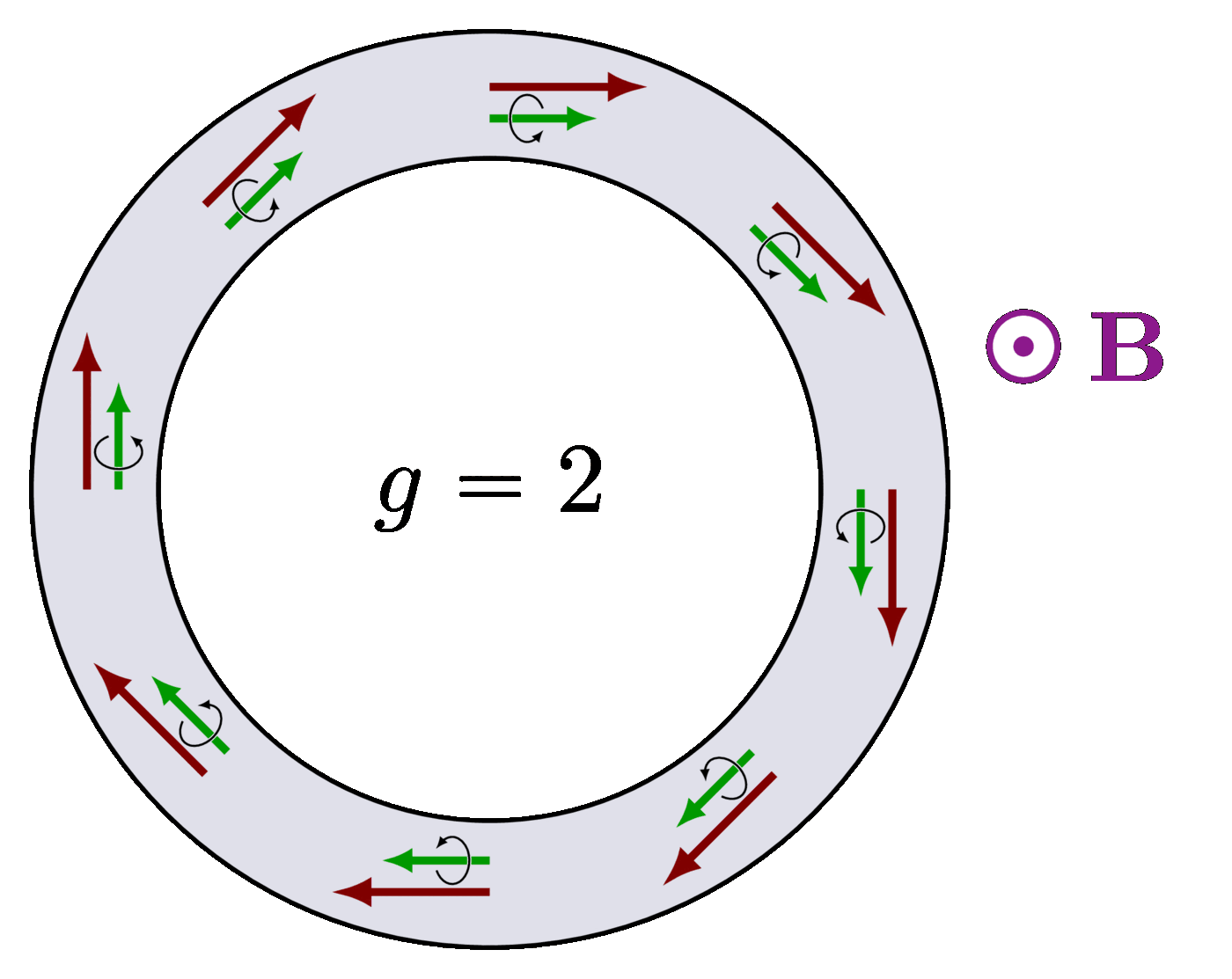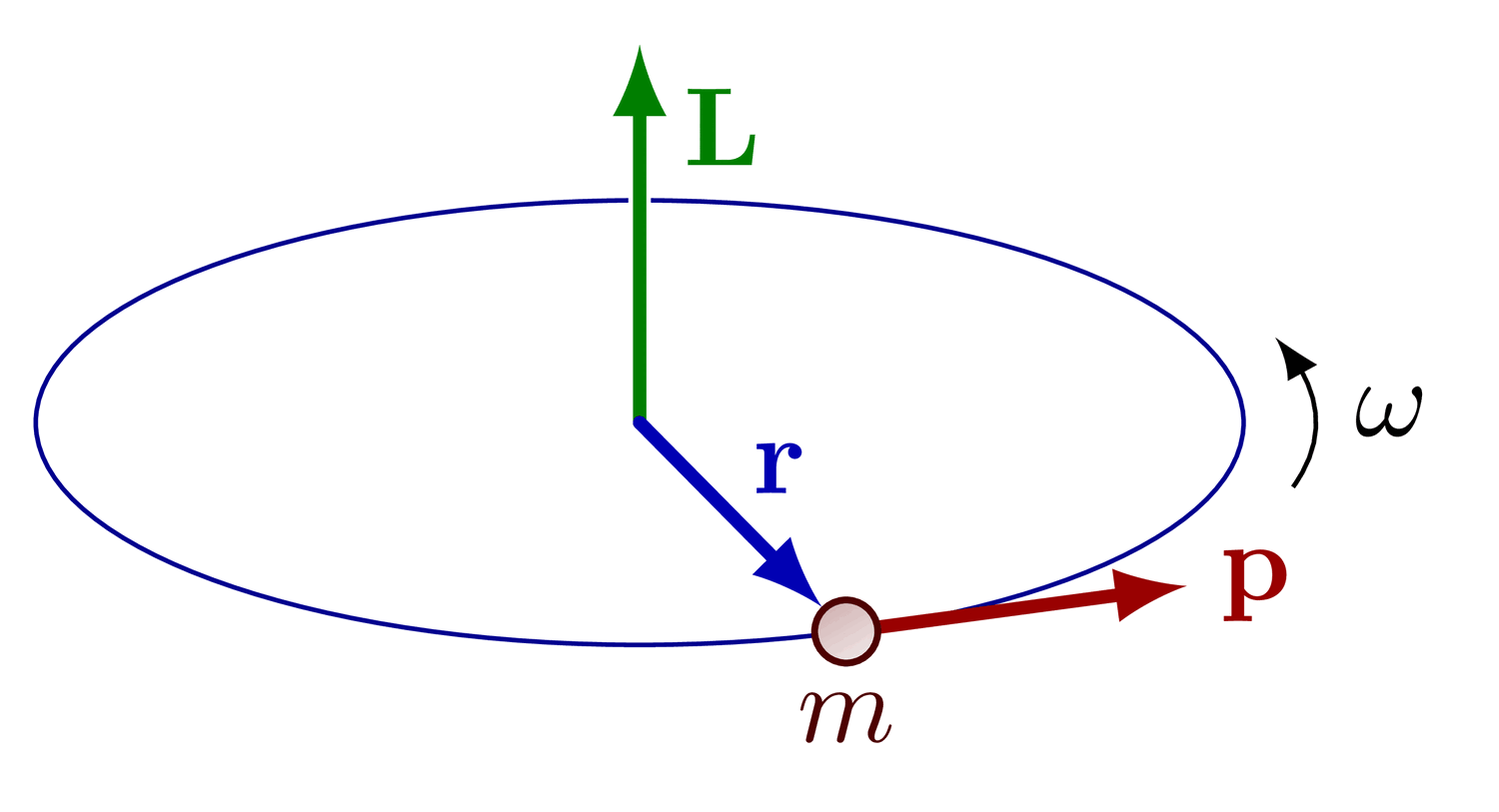Study of helicity (handedness) and spin correlations in pion decay, and parity violation.
See the “decay” tag for more similar figures.
Edit and compile if you like:
% Author: Izaak Neutelings (March 2020)\documentclass[border=3pt,tikz]{standalone}\usepackage{amsmath} % for \dfrac\usepackage{mathabx} % for \Earth\usepackage{bm} % \bm\usepackage{physics}\usepackage{tikz}\usetikzlibrary{arrows.meta}\usetikzlibrary{calc}\tikzset{>=latex} % for LaTeX arrow head\usepackage{xcolor}\colorlet{vcol}{red!50!black}\colorlet{veccol}{green!50!black}\colorlet{Icol}{blue!70!black}\colorlet{wcol}{orange!90!black}\colorlet{Scol}{green!60!black}\tikzstyle{current}=[->,Icol] %thick,\tikzstyle{force}=[->,very thick,BFcol]\tikzstyle{velocity}=[->,thick,vcol]\tikzstyle{spin}=[->,very thick,Scol]\tikzstyle{charge+}=[very thin,draw=black,top color=red!50,bottom color=red!90!black,shading angle=20,circle,inner sep=0.2]\tikzstyle{charge-}=[very thin,draw=black,top color=blue!50,bottom color=blue!80,shading angle=20,circle,inner sep=0.2]\tikzstyle{charge0}=[very thin,draw=black,top color=green!60!black!40,bottom color=green!60!black!80,shading angle=20,circle,inner sep=0.2]\tikzstyle{vector}=[->,thick,veccol]\tikzset{pics/spin/.style={code={\def\L{0.38}\draw[-{Latex[length=3,width=2.5]},pic actions,rotate=#1,line width=0.9,Scol] (-\L/2,0) --++ (\L,0);\draw[pic actions,rotate=#1,thin,white](-0.15*\L,0)++(170:{0.16*\L} and {0.22*\L}) arc (170:190:{0.16*\L} and {0.22*\L});\draw[-{Latex[length=1.2,width=1]},pic actions,rotate=#1,very thin](-0.15*\L,0)++(25:{0.16*\L} and {0.22*\L}) arc (25:305:{0.16*\L} and {0.22*\L}) --++ (50:0.09*\L);}},pics/spin/.default=90,}\begin{document}
Click to download: decay_helicity.tex • decay_helicity.pdf
Open in Overleaf: decay_helicity.tex








